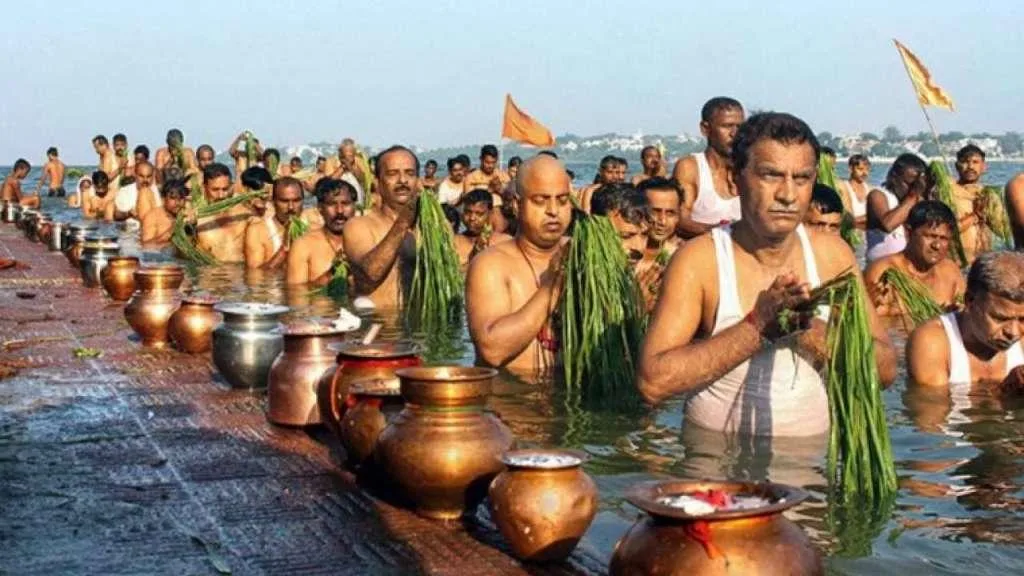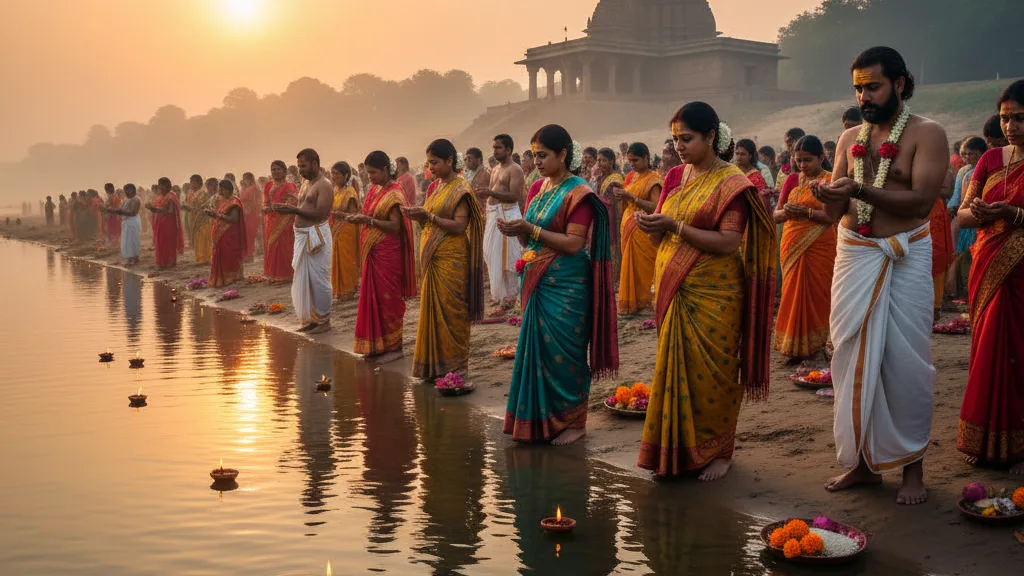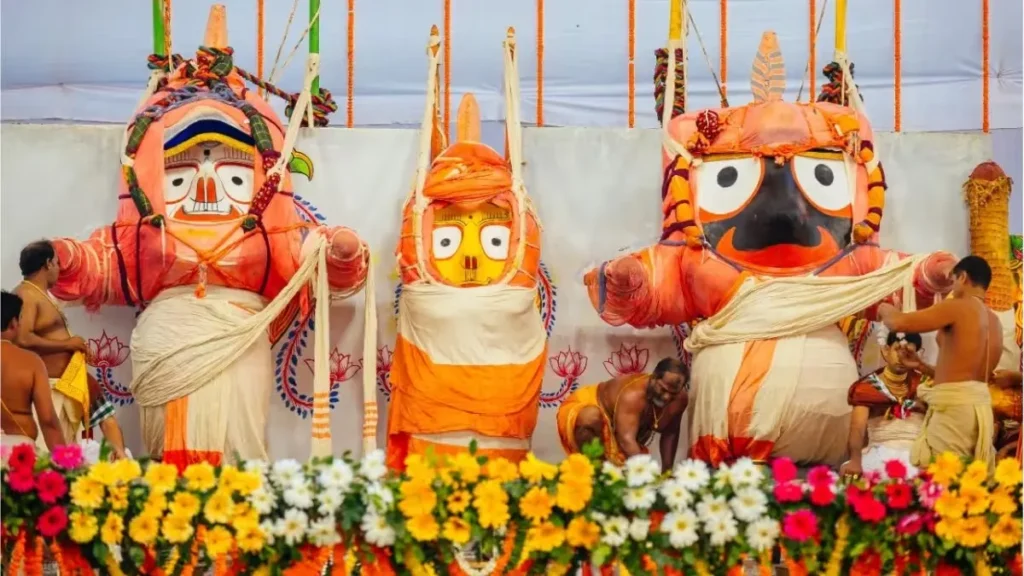
Table of Contents
Why Mahalaya Holds a Special Place in Odisha
Mahalaya in Odisha is more than just a date on the lunar calendar; it’s a sacred turning point. Observed on the Amabasya (new moon) of Ashwina month, Mahalaya marks the end of Pitrupakshya (the fortnight of ancestors) and the beginning of Devi Paksha.
Last year, I witnessed Mahalaya rituals at Bindusagar tank in Bhubaneswar. Families had gathered, priests chanted mantras, and elders performed tarpan with folded hands. The sight of devotion and unity was humbling, it felt like a collective bridge between the living and the departed.
So, what makes this observance in Odisha so special? Let’s dive into its origins, practices, and cultural significance.The Cosmic Shift on Mahalaya Amabasya
This day represents a spiritual crossroads. According to belief, ancestors descend to Earth during Pitrupakshya to bless their descendants. On Mahalaya Amabasya, devotees bid them farewell through rituals like tarpan and shraddha.
Thousands flock to Jagannath Temple in Puri, where rituals like tila tarpan (offering sesame with water) and pinda daan are performed on the twenty-two steps (Baishi Pahacha) as the steps are considered pious. However, now it is banned and the rituals are performed along the corridor of the north gate. In villages, people observe vegetarian diets and offer prayers during the fortnight leading up to to the festival.
How Odias Perform Mahalaya Shraddha
At dawn, families purify their homes, light lamps, and head to rivers, holy tanks, or ponds. If not possible, rituals are also performed at home for ancestral offerings.
Key rituals include:
- Tarpan: Offering water, sesame, and prayers to forefathers.
- Pinda Daan: Rice balls offered as symbolic food for ancestors.
- Charity: Donating food and clothes to the poor for spiritual merit.
- Feeding Crows: Considered messengers of ancestors, feeding them ensures offerings reach forefathers.
- Community Gatherings: Families perform group rituals, strengthening social ties.
Symbolism and Spiritual Resonance – Lessons
It is more than rituals; it’s about gratitude and renewal. By offering tarpan, Odias honour their ancestors, while Durga’s descent symbolizes hope, strength, and the triumph of good over evil.
It reminds us of life’s cycles: darkness ends, light emerges; endings bring beginnings. The occasion becomes a spiritual reset button for families, moving from solemn remembrance to festive joy.Contemporary Relevance – Why This Still Matters
Despite the fast-paced city life, Odias hold firmly to Mahalaya traditions. For instance, families often travel back to their villages, meanwhile, urban temples organize large-scale rituals, and charity remains central.
Furthermore, younger generations post about this observance, Shraddha, on social media, thereby keeping the festival relevant in a modern context. Consequently, the festival bridges ancestral homage and community unity.Eco-Spiritual Wisdom – Ancient Sustainability Lessons
Furthermore, these sacred rituals also reflect eco-conscious practices. For instance, offerings like sesame, water, rice, and leaves are biodegradable, naturally aligning with the rhythms of nature.
In addition, today many Odia communities organize river clean-ups, tree plantations, and eco-friendly idol making on Mahalaya, thereby merging age-old wisdom with modern environmental awareness.Best Time and Places to Witness Mahalaya Rituals in Odisha
Best Time: Mahalaya Amabasya, usually in September–October, just before Durga Puja.
Top Places in Odisha:
- Bindusagar Tank near Lingaraj Temple, Bhubaneswar
- Jagannath Temple Northern Gate, Puri
- Village ponds and ghats across the state
- Samaleswari Temple, Sambalpur (for Dhabalamukhi Besha)
Things to Do During Mahalaya in Odisha
These activities transform Mahalaya into a lived cultural experience, beyond just rituals:
- Witness tarpan rituals at rivers or ponds.
- Listen to Mahishasura Mardini chants at 4 a.m.
- Watch idol-makers perform Chokshyu Daan.
- Participate in charity drives for the poor.
- Prepare homes and puja spaces for Durga Puja.


Pingback: Vishwakarma Puja 2025 in Odisha – Rituals, Dates & Travel Guide
Pingback: Dussera 2025 in Odisha –Story, Value & Gosani Jatra in Puri